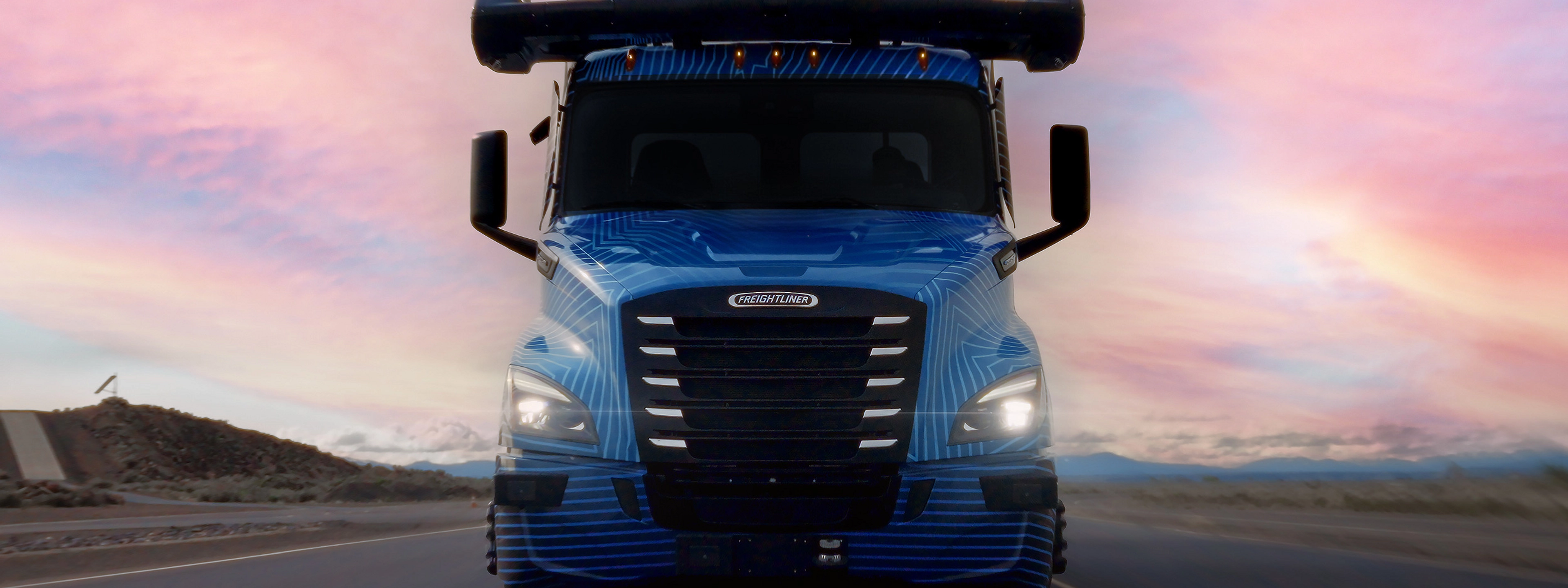
There are many myths associated with autonomous driving. In this guest article, Head of Global Autonomous Technology Group, Joanna Buttler, takes a closer look at some of the myths and explains why autonomous driving can offer many improvements and benefits, especially in road transport. Not only for Daimler Truck, but also for drivers, logistic companies and our society as a whole.
Fact: The current maturity level in autonomous driving is the result of decades of development and preparation -- with safety always being the highest principle.
When it comes to autonomous driving, we leave nothing to chance. Our engineers carefully and accurately check every detail, to create a safe product wherever possible – this includes extensive test track testing and simulation as well as on road validation. Work on autonomous vehicles at Daimler Truck goes back to the 1980s. Since 2019, we have made significant progress together with our partner Torc Robotics to make the idea of autonomous trucks a reality. We have shown that our self-driving trucks can safely handle challenging traffic situations – highways, surface streets, ramps, and turns at controlled intersections. The core of our technology development is our “redundant vehicle platform”, the "Autonomous-Ready" Freightliner Cascadia as the basis for safe driving, as well as the autonomous driving software, the “Virtual Driver” from Torc. Our vehicle platform is purposefully designed and built with a second set of safety-critical systems such as steering, braking and the power network as a backup, assuring that if one fails, the other immediately takes over. The highly integrated autonomous driving software "sees" (camera, radar, LiDAR detection) by perceiving the environment near and far ahead, “thinks” (plans the next maneuver) and “acts” (lane changes, acceleration, braking, merging). The Autonomous Driver thereby remains at a very high-performance level – and technical systems never get tired, cannot be distracted and are not guided by emotions.
Facts: Autonomous driving creates economic growth and can offer a higher level of safety.
Self-driving trucks can be deployed almost around the clock, significantly increasing utilization and profitability for logistics companies. At the same time, it enhances efficiency and enables the continuous supply of essential goods such as food, medicine and clothing benefiting all of society. In short: the technology offers a possible solution for the constantly increasing freight demand. As we have seen with many innovations and new technologies before, autonomous trucking can potentially create new job profiles and therefore opportunities beyond the driving task in the logistics industry. Moreover, the use of state-of-the-art technology – for example through the combination of camera, radar and LiDAR sensor systems and thus improved perception of the traffic situation – can reduce the likelihood and impact of serious accidents and significantly help to protect all road users.
Facts: Today the trucking industry faces a driver shortage that is projected to double by 2030. We are convinced, jobs will not necessarily disappear, profiles and tasks will change. As has happened with other innovations and new technologies before.
For example, in the logistics sector our focus for the market launch of the self-driving truck is on the deployment on U.S. highways and thus on taking over the driving task on long, monotonous routes. Humans continue to play a crucial role in the supply chain. They are located, for example, on the first or last mile, monitoring and managing the autonomous fleet. For this task, necessary interactions with other people in logistics operations and required decision-making are crucial.
Facts: The use of autonomous technology offers logistics service providers enormous efficiency potential, as autonomous trucks only need refueling and maintenance breaks. Therefore, can therefore spend more time on the road.
According to the American Trucking Associations (ATA), the freight tonnage transported is expected to increase in the US in the next decade from ~16 billion (2019) to 21 billion tons (2030). In this context, self-driving trucks help to cope with the ever-growing volume of freight. Also, when it comes to “uptime”, according to Daimler Truck sources, today’s trucks are often used only around a little more than a third of the available time. In addition, self-driving trucks can help counteract the simultaneous trend of driver shortage, which fluctuates from year to year but is forecast to become more severe according to research done by McKinsey & Company. So autonomous trucking has a lot economic and social benefits.
Facts: improved deployment planning and CO2-free drive technologies have serious potential to reduce CO2 emissions in general.
Self-driving technology can be deployed during the day and night. Nighttime driving or driving during off-peak traffic hours, in combination with improved route guidance, can help reduce emissions through fuel reduction.
With the autonomous Freightliner eCascadia technology demonstrator, Daimler Truck has shown that CO2-free, battery-electric drive and autonomous driving provides optimal vehicle solutions for its customers. Imagine a battery-electric autonomous truck that delivers goods to a warehouse, going back and forth in a constant loop. The truck recharges while being loaded and unloaded, allowing continuous CO2-free operation.
Autonomous driving at Daimler Truck.
Daimler Truck is pursuing the objective of developing SAE Level 4 autonomous trucks for long-distance haulage. In 2027, Daimler Truck plans to enter the US market with autonomous trucks. More information at https://www.daimlertruck.com/en/innovation/autonomous-driving/why-autonomous-driving
Article With Thanks to Joanna Buttler is the Head of Global Autonomous Technology Group at Daimler Truck.